Oversteer
Oversteer is related to understeer and occurs when the rear tyres reach the limit of adhesion in a corner before the front while cornering. This leads to ‘the back coming out’. If you manage to perform sustained, controlled oversteer this is know as drifting.
Oversteer overview
The diagram below shows four stages of oversteer, which we’ll now explore in more detail.
A. The car has turned in normally and is aiming towards the apex.
B. The rear wheels have started to lose adhesion, the driver compensates by steering left to keep steering aligned to the desired driving line (counter steering, explained below).
C. The driver has maintained control of the car and continues to follow the desired line.
D. The car is at the limit of left hand lock, a spin is likely at this stage unless dramatic corrections are made.
Oversteer is more exciting than understeer and like most exciting things (such as jumping off cliffs) there is an element of risk involved. Most ‘driver’s cars’ have a tendency to oversteer when on the limit around corners, and this property can be found in a variety of vehicle layouts and drive formats.
Oversteer – factors involved
Oversteer results from a number of factors, some of which involve the natural handling characteristics of the car, and some result from the way it’s being driven.
Passive factors at work (the natural properties of the car)
- Weight distribution (front or rear bias)
- Engine and drive layout
- Suspension & chassis setup
- Tyre type, wear and pressures
Active factors involved (the way it’s being driven)
- Cornering speed
- Throttle
- Braking
- Steering inputs
- Weight transfer
Symptoms
It’s unlikely you’ll ever experience oversteer unless you’re driving a car near the limits of grip. You can recognise oversteer if…
- The rear of the vehicle becomes unstable and ‘light’ due to lack of grip.
- The car starts to rotate so the driver is facing towards the inside of the corner.
Causes
There are four major active causes of oversteer, but what you’re likely to encounter depends on the car being driven (for more information on this please skip to the next section). Causes include:
- Entering the corner too fast
- Accelerating into the corner, too early or too aggressively
- Braking into the corner or mid corner
- Lifting off the throttle mid-corner. This scenario is also known as:
- lift-off oversteer
- snap-oversteer
- trailing-throttle oversteer
- throttle off oversteer
- lift-throttle oversteer
Lift-off oversteer
Lift-off oversteer is a phenomenon which can occur when reducing the throttle mid corner. This will only happen when driving close to the limit so only experiment when on the track! Sporty front wheel drive drive cars can be especially prone to this due to the heavy front end and light rear. Reducing the throttle input results in a forward weight transfer, which increases the grip at the front tyres, but reduces levels at the rear. If this is performed during cornering, the combination of the heavy front end and the reduction of grip can cause the rear wheels to break traction and start to slide towards the outside of the corner. In the image below, the driver of a front engine car lifts off the throttle mid corner at [A] which results in lift-off oversteer at [B] due to a forward weight transfer.
Luckily, lift off oversteer can usually be corrected by reapplying the throttle and accelerating. This should pull the front of the car forwards and straighten out the car, but continuing to reduce throttle application can cause the car to spin. Steering in the direction of the intended direction of travel will help keep the car on track.
Oversteer and racing / performance cars
Most performance cars have a tendency to oversteer as they are usually developed to provide a large amount of grip at the front wheels (to turn into corners well at speed), and a large amount of power (usually at the rear wheels). This means that if traction is lost it will usually be at the back first. Thus in most cases the ideal cornering technique in a performance car needs to try and reduce or control oversteer.
Preventing & correcting oversteer – rules of thumb
To correct any form of traction loss, you need to consider why you’ve exceeded the limits of grip at the wheels. In all cases of oversteer, counter steering is also required.
1. Entering the corner too fast
Enter a corner too fast and you’re asking for trouble. Unless of course you have a lovely long run off to play with or if you’re driving Silverstone in a go-kart. It’s not the quickest way to take a corner and leads to increased risk of oversteer. If you have entered a corner too fast, ensure that every input you make is incredibly smooth, and take the easiest route. Next time make sure your entry speed is slow enough to maintain grip, you can build up speed as you gain experience.
2. Accelerating into the corner, too early or too aggressively
If you manage to break traction at the back when applying throttle, you’re probably in a powerful car and need to be less aggressive. If you’re spinning wheels, the power is not transferring to the road and you’re not benefiting from the many horses you have sitting under the bonnet. Gently ease off the gas and you should regain adhesion at the rear wheels.
3. Lifting off the throttle mid-corner
If you are on the power mid-corner and close to the limit, do not lift off the throttle. The resulting forward weight transfer can upset the balance of the car and allow the rear wheels to break loose. In a front wheel drive car, reapplying the throttle can often help in this situation.
4. Braking into the corner or mid corner
You should avoid braking in corners in most situations, however there are circumstances which require the use of the anchors. Ensure braking inputs are especially smooth, gentle and progressive, and if a squirrel has just run out in front of you, try steering around rather then doing an emergency stop. To correct brake-induced oversteer, smoothly (but rapidly) release the brake and adhesion should be reintroduced.
Correcting oversteer – counter steering / opposite lock
Whatever the cause of oversteer it is important to keep the front wheels pointing in the direction you’re hoping to go. If you fail to do this, the most likely result is a spin. This technique is known as counter-steering or applying opposite lock (see diagram below). You should apply enough steering lock to point the wheels in the direction of the slide as shown below. Too little and you’re likely to spin as the back continues to come round, too much and the car will rapidly over-correct, often resulting in a spin in the opposite direction. The skill can only be mastered with plenty of practice and should become instinct if you’re planning to drive fast on a track. Tip: Always look and focus on the direction you’re hoping to go – this makes the steering correction almost automatic. Conversely – don’t concentrate too hard on that tree you’re hoping to miss as you will be more likely to head in that direction.
Applying corrective steering needs to be done rapidly to catch the back of the car before it slides to a point which may be difficult to control. Once the slide has been controlled and the back starts to fall back in line, it’s also important to get the steering correction off quickly too, otherwise you might find yourself with oversteer in the opposite direction due to the resulting pendulum effect.
Oversteer and different drive / engine layouts
Rear wheel drive
In a rear wheel drive car you have the benefit of sharing the demands on adhesion between the front and rear wheels. The front wheels do the steering and the rear do the accelerating (and deceleration under engine braking). This usually results in a more balanced vehicle. In most conventional front engine, front wheel drive vehicles such as the Ford Fiesta it is rare to ever experience anything other than understeer. Rear wheel drive cars can experience oversteer for different reasons depending on where the engine is located.
Rear wheel drive, front engine
[e.g. BMW M3, Mazda MX5]
| Cause of oversteer | Likelihood of oversteer |
|---|---|
| Entering the corner too fast | High |
| Accelerating early or aggressively | High |
| Lifting off the throttle | Medium |
| Braking | Medium |
In a front engine car, most of the weight is over the front wheels. This usually results in higher natural levels of grip at the front (which is useful for steering and braking). The comparatively unladen rear wheels may have lower natural levels of grip, which can lead to oversteer especially when accelerating round a corner. This is the reason some very high powered cars have wider wheels and tyres at the back.
Question: When a front-engine rear-wheel drive car accelerates hard in a corner, there is a high possibility of oversteer. I also understand that weight is transferred to the rear under acceleration, therefore i would like to know how the rear wheels can still lose traction when weight is transferred to the rear and on to the rear wheels.
Answer: There are many factors at work when cornering and it’s a fine balance of forces. It’s important to understand that when you’re cornering there is much less grip available for acceleration and braking. For a rear weight transfer to occur in the first place, you need to have the grip available to put the power down – if you try to accelerate hard you’re likely to overwhelm the rear tyres and spin one or both of the wheels. This reduces the physical grip dramatically which can then lead to oversteer.
Rear wheel drive, rear engine
[e.g. Porsche 911]
| Cause of oversteer | Likelihood of oversteer |
|---|---|
| Entering the corner too fast | High |
| Accelerating early or aggressively | Medium |
| Lifting off the throttle | High |
| Braking | High |
Rear engine, rear wheel drive vehicles such as the Porsche 911 can oversteer for different reasons to front engine varieties. In this case most of the vehicle weight is over the rear wheels, leading to greater levels of natural grip at the back, which should lead to an inherent low risk of oversteer. However, there is another force at work here – momentum. Objects with greater mass carry more momentum and are harder to change direction at speed. In the case of rear engine cars, the rear has more momentum than the front which can lead to a greater risk of oversteer as a result of braking or lifting off mid corner.
Mid engine cars can also oversteer for similar reasons, but tend to provide a better balance of under and oversteer.
Front wheel drive (front engine)
[e.g. Peugeot 205 GTi, Renault Clio Cup]
| Cause of oversteer | Likelihood of oversteer |
|---|---|
| Entering the corner too fast | More likely to understeer initially |
| Accelerating early or aggressively | Low |
| Lifting off the throttle | High |
| Braking | High |
Sporty front wheel drive cars are more likely to experience oversteer than a standard car due to the vehicle setup. Dial out the inherent understeer tendencies of a front wheel drive car using clever engineering, and the result is a better ‘turn in’ and an increased ability to oversteer due to the naturally light rear. In this case, it is usually possible to accelerate out of the oversteer situation, using the rearward weight transfer to actively increase levels of grip at the back. Front wheel drive cars are especially prone to lift off oversteer due to the forward weight transfer combined with light rear end.
Question: When a FWD car accelerates, weight is transferred to the rear. Does this mean that the front of the car where the engine is located becomes lighter than the rear during acceleration?
Answer: Firstly, the weight transfers which result from acceleration are perhaps not as great as you think. This is because you’re unlikely to be able to accelerate as quickly as you can brake or change direction with the steering – thus the advantages or rear weight transfers are usually slightly less than in other directions. It’s very unlikely any front engine car could accelerate to the point that the rear weights more than the front. There will be some transfer of weight onto the rear wheels, but not that much.
Four wheel drive
[e.g. Subaru Impreza, Nissan Skyline, Audi Quattro]
| Cause of oversteer | Likelihood of oversteer |
|---|---|
| Entering the corner too fast | Medium |
| Accelerating early or aggressively | Medium / High |
| Lifting off the throttle | Medium |
| Braking | Medium |
Four wheel drive vehicles can oversteer as much as rear wheel drive cars, depending on setup. However, due to the sharing of drive forces over all four wheels, there is less risk of oversteer due to too over-exuberance with the throttle pedal. Treat as a rear wheel drive vehicle and you won’t go far wrong. With particularly powerful four wheel drive vehicles it may be possible to enter a ‘four wheel drift’. This is a particularly spectacular way of exiting the road!
Simple modifications to make a car less prone to oversteer
If you have a track car and find oversteer a problem, you can complete some relatively easy modifications which can make the handling more neutral. These include:
- Reducing the rear tyre pressure
- Softening rear springs or anti-roll bar
- Use softer rear tyres
- Increase rear down-force (if aerodynamics fitted)
If you want to try something a little more daring, the chart below can help.
Advanced oversteer diagnosis and modifications
Below is a flowchart which can help diagnose and treat the symptoms of oversteer.
Disclaimer: Always stick to the manufacturer’s recommended limits when altering tyre pressures, and never modify a road car.
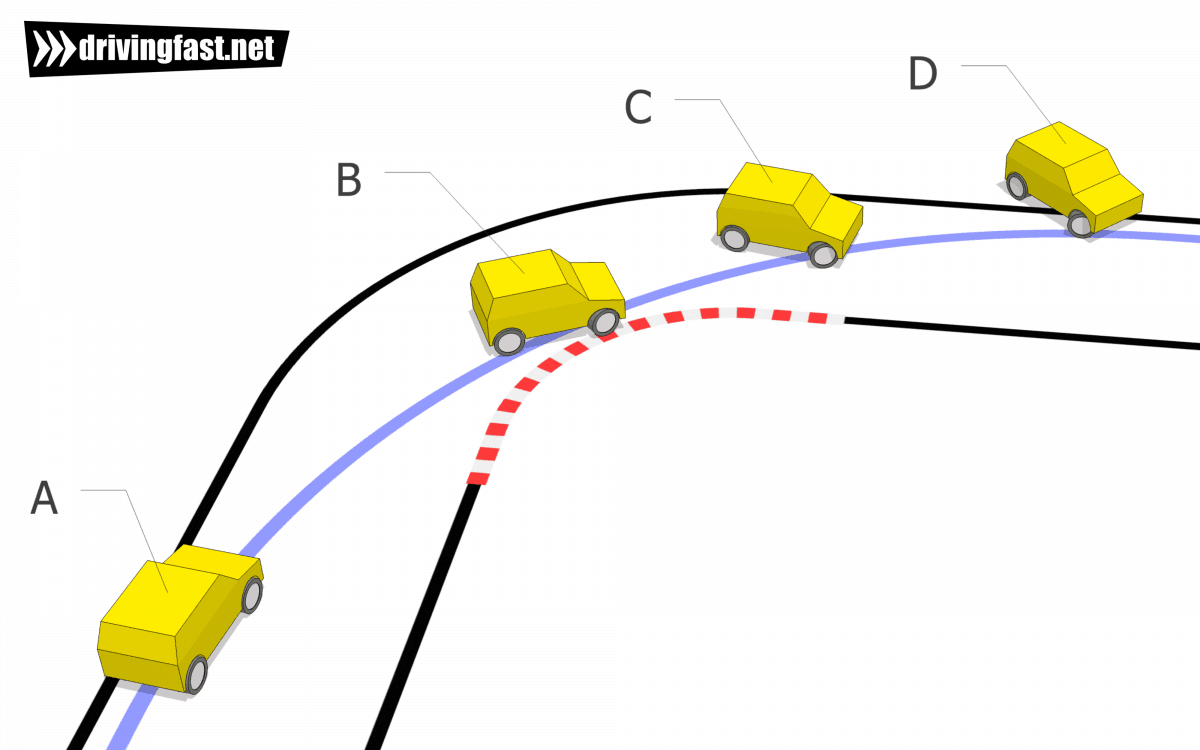
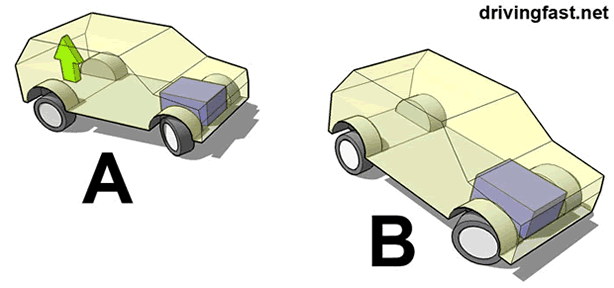
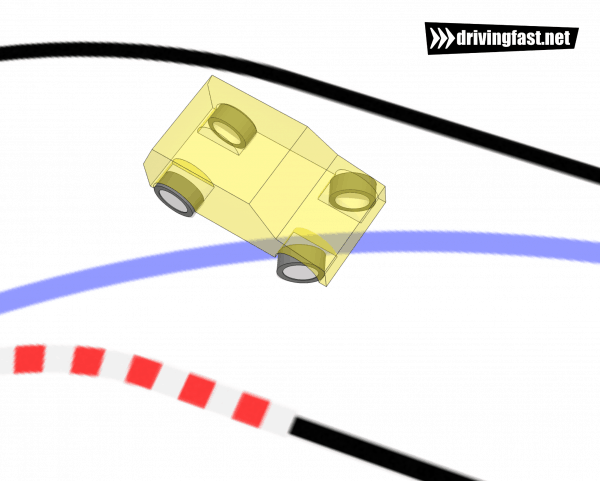
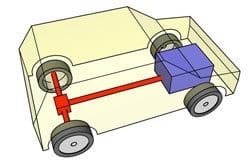
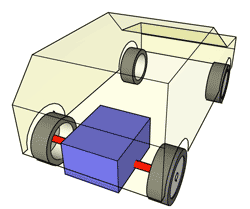
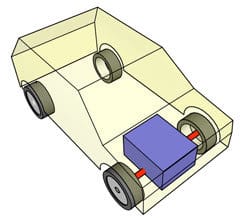
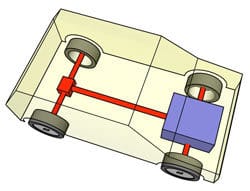

Very good article.
Thank you for detailed and easy to understand explanation.